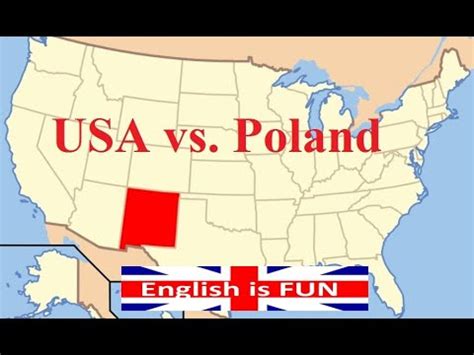Poland Compared to the US: What's the Real Difference?
Poland and the United States, while both boasting vibrant cultures and rich histories, offer vastly different experiences for their residents. This comparison delves into key areas, highlighting the significant contrasts and surprising similarities between these two nations. From cost of living and healthcare to societal norms and political landscapes, we'll explore the real differences that shape life in each country.
Cost of Living: A World Apart
One of the most striking differences lies in the cost of living. Generally, Poland offers a significantly lower cost of living than the US. Housing, groceries, transportation, and entertainment are considerably cheaper in Poland, particularly in cities outside of major metropolitan areas like Warsaw. However, while salaries are lower in Poland, the difference in cost of living often means a higher purchasing power for many. This is a crucial factor for anyone considering relocation or comparing the economic realities of the two countries.
Healthcare: Access and Affordability
How does healthcare access and affordability differ between Poland and the US? This is a complex question with a significant impact on citizens' lives. Poland boasts a universal healthcare system, meaning all citizens have access to healthcare services, regardless of their income. While the quality of care can vary, the system is designed to provide basic healthcare to everyone. In contrast, the US healthcare system is primarily private, resulting in high costs and unequal access. Many Americans face financial burdens due to medical expenses, a stark contrast to the more accessible system in Poland. The quality of care in both systems is uneven, dependent on factors such as location and specific facilities.
Culture and Society: A Tapestry of Differences
What are the cultural and societal differences between Poland and the US? Poland maintains a strong sense of national identity and tradition, evident in its customs, language, and societal values. Family ties are often stronger in Poland compared to the US, and there is a greater emphasis on community and social connections. The US, being a melting pot of cultures, is far more diverse and individualistic. This difference manifests in various aspects of daily life, from social interactions to personal freedoms. Religious observance is also more prevalent in Poland, particularly Catholicism, which plays a significant role in shaping social norms and values.
Politics and Governance: Diverging Systems
The political systems of Poland and the US differ significantly. Poland is a parliamentary republic, with power divided among different branches of government. The US operates as a presidential republic, with a more centralized executive branch. The political landscape in Poland has seen increasing polarization in recent years, while the US also grapples with its own political divisions. Understanding these differing governmental structures and political climates is vital when comparing the two nations.
Career Opportunities and Job Market: Exploring the Landscape
Are there significant differences in career opportunities and the job market in Poland compared to the US? The US boasts a larger and more diverse job market with numerous opportunities across various sectors. However, Poland's economy has been growing steadily in recent years, particularly in sectors like technology and manufacturing. Salaries generally tend to be lower in Poland, but the lower cost of living can offset this difference to some extent. Language skills are a crucial consideration for anyone seeking employment in either country.
Conclusion: A Tale of Two Nations
Poland and the US represent distinct cultures, economies, and societies. While the US offers greater economic opportunities and diversity, Poland provides a lower cost of living and a strong sense of community. The choice between the two depends on individual priorities and preferences. Understanding these key differences – from healthcare and cost of living to cultural nuances and political systems – empowers individuals to make informed decisions about where they choose to live and work.

